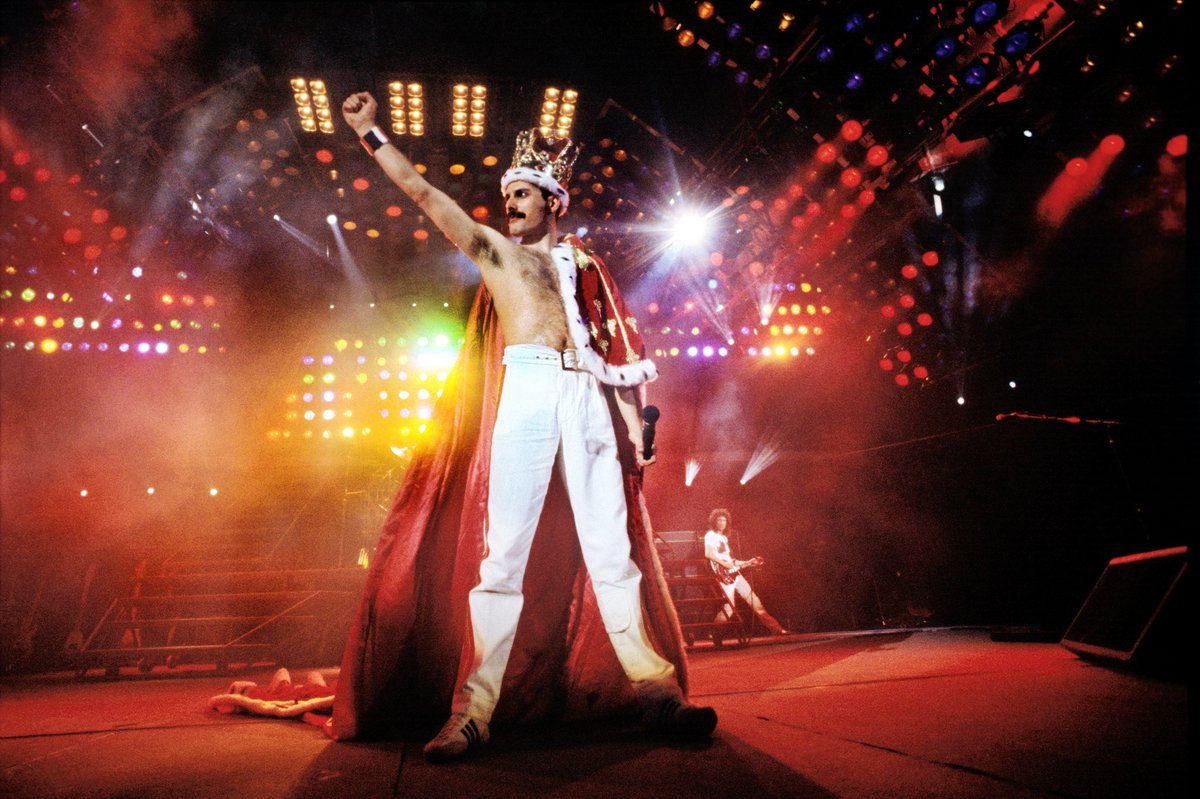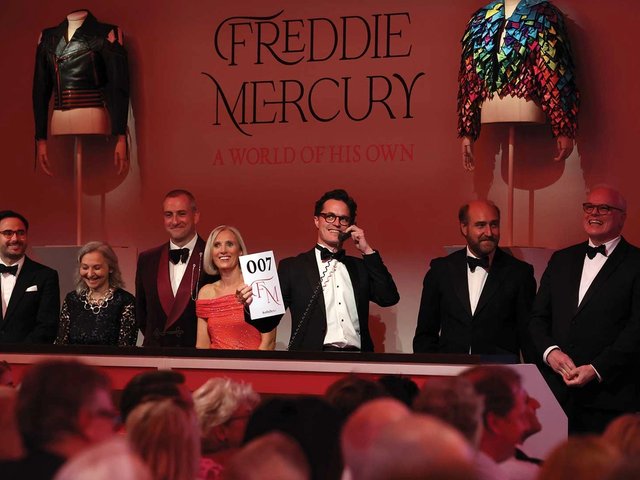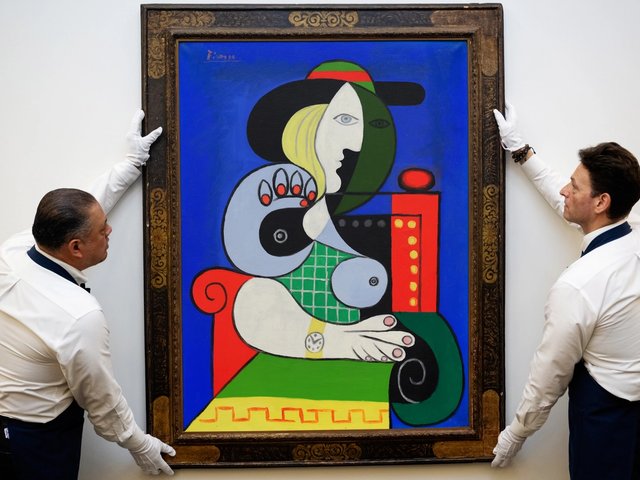In his recent autobiography The Tastemaker: My Life with the Legends and Geniuses of Rock Music, Tony King remembers sitting with the Queen star Freddie Mercury in his final days. “So brave. Shopping until the end, buying up paintings in Christie’s auctions,” King writes. “I used to lie on the bed next to him and hold his hand, which was stone-cold, like a bone. They’d bring in the paintings he’d bought and prop them up at the end of the bed for him to look at. I said, ‘Fred, why are you doing this?’ And he said, ‘What else have I got to do? I can’t go out, I can’t leave the bed, but at least I can go shopping.’”
This September, over 30 years since Mercury’s death of complications from Aids in 1991, Sotheby’s will hold an enormous, six-part sale of the singer-songwriter’s collection, consisting of around 1,500 lots from his Kensington home, Garden Lodge. Mercury left the West London house and its extensive contents to Mary Austin, his former girlfriend and lifelong friend. For three decades, Austin kept the house and its contents almost exactly as they were when Mercury died, but she has now decided to sell the collection (it is not known whether the house will also be sold).
“For many years now, I have had the joy and privilege of living surrounded by all the wonderful things that Freddie sought out and so loved,” Austin says in a statement. “But the years have passed, and the time has come for me to take the difficult decision to close this very special chapter in my life. It was important to me to do this in a way that I felt Freddie would have loved, and there was nothing he loved more than an auction.”
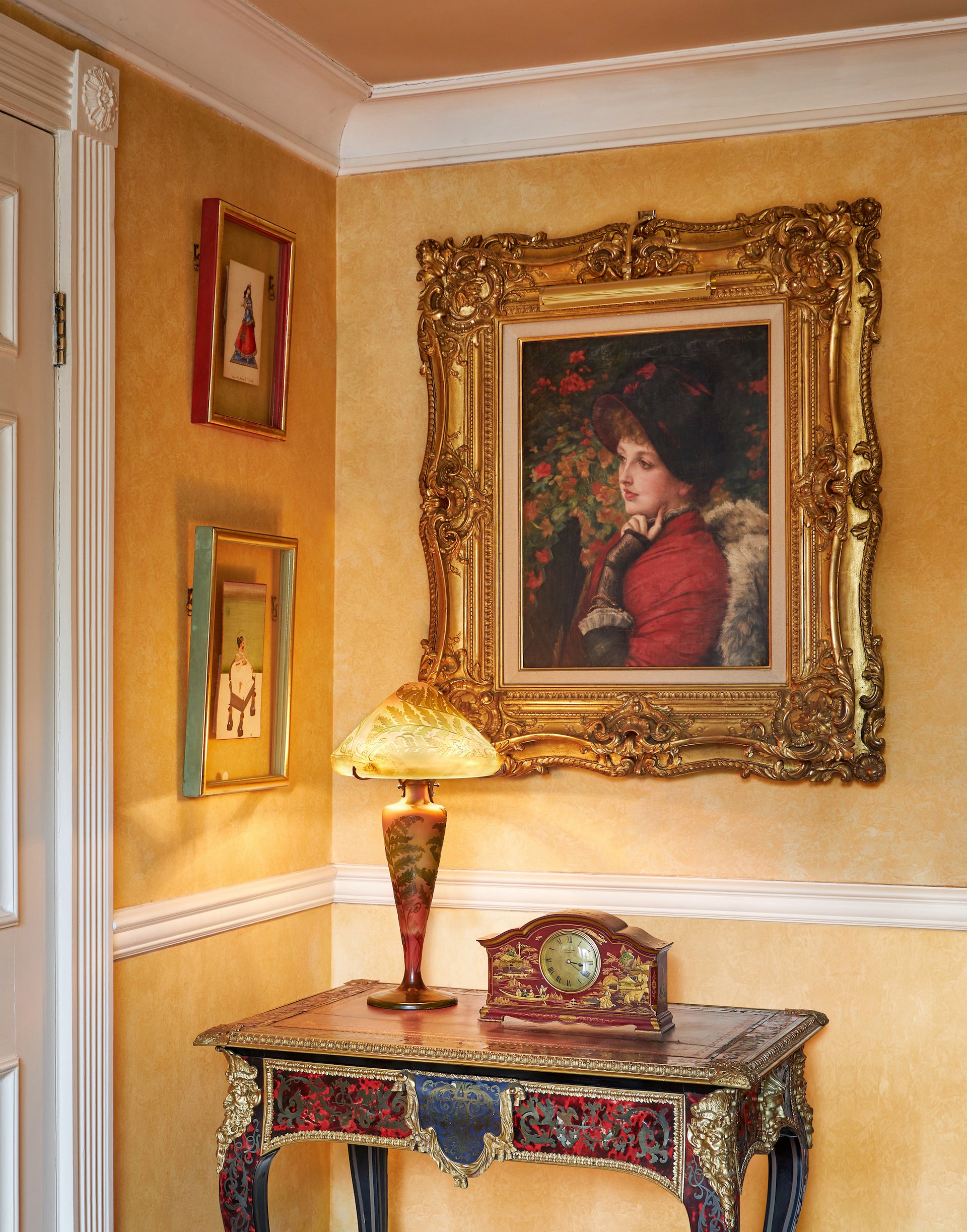
James Tissot's Type of Beauty (1880), seen here in situ at Freddie Mercury's home Garden Lodge, carries Sotheby's highest estimate, £400,000-£600,000 Courtesy Sotheby's
Mercury bought Garden Lodge in 1980 and its contents, according to David Macdonald, the head of single owner sales at Sotheby’s London, are “really a 1980s extravaganza, but peppered with brilliant things…it’s unbelievable, in 20 odd years at Sotheby’s, I don’t think I’ve ever seen anything quite like it—it’s on the scale of ‘Chatsworth: The Attic Sale’ [Sotheby’s three-day event in 2010]”. Macdonald also likens the auction to the Elton John sale at Sotheby’s in 1988, when over 2,000 items belonging to the singer sold for more than $8.2m.
The Mercury collection includes hand-written lyrics for Queen songs (among them, the working lyrics to We Are the Champions, est £200,000-£300,000, and Killer Queen, est £50,000-£70,000) alongside original items worn on stage such as the crown and accompanying cloak worn for the finale rendition of God Save The Queen during his last tour with Queen, The Magic Tour in 1986 (est £60,000-£80,000). The crown, modelled on the coronation crown, will be on display in Sotheby’s New Bond Street windows from today (26 April) until 5 May in the leadup to King Charles’s coronation.
But alongside such memorabilia are items that reflect a more private side to Mercury, his broad-ranging eye that fell in particular on Japanese art, studio glassware and Victorian pictures.
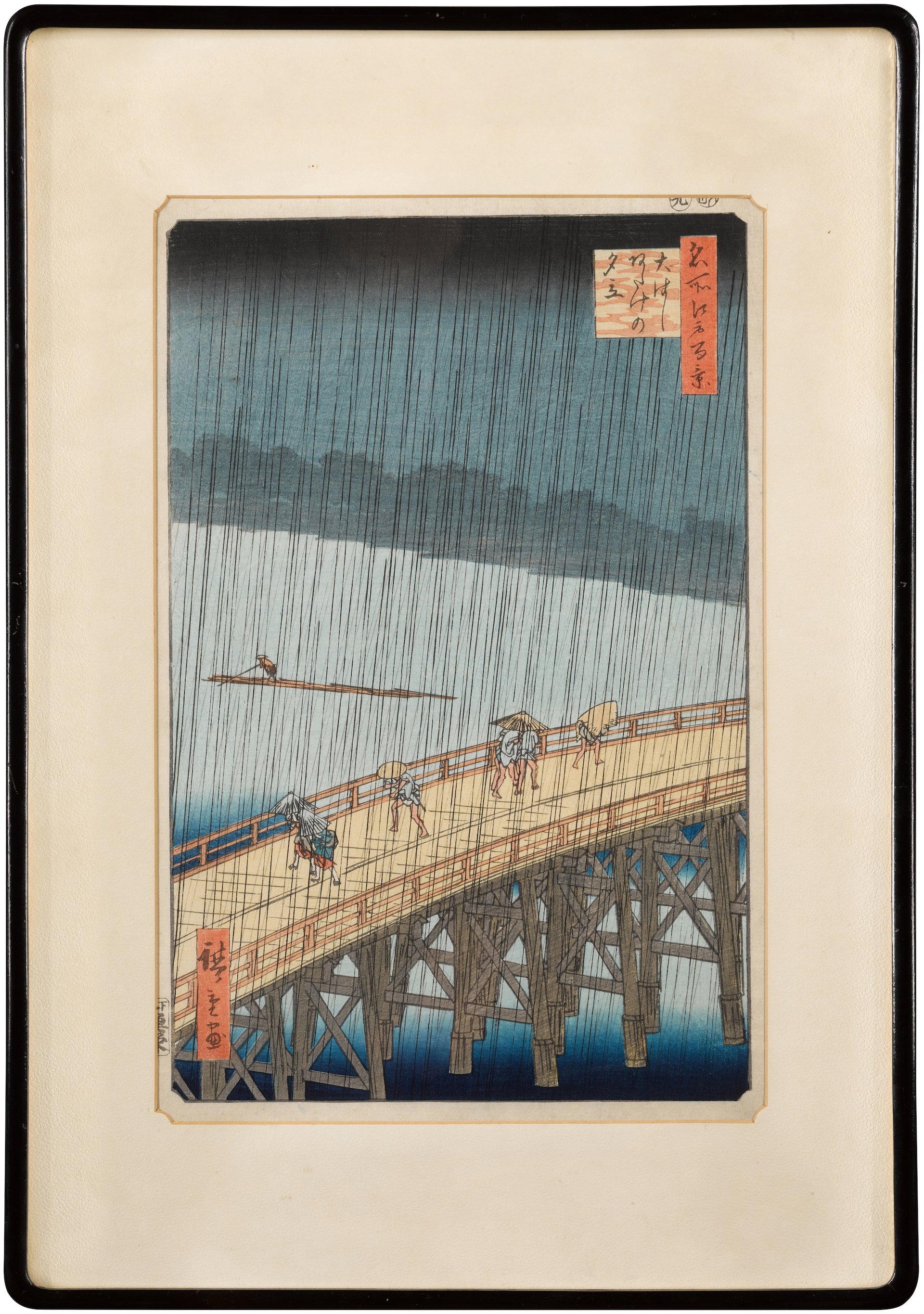
Utagawa Hiroshige, Sudden Shower over the Shin-Ohashi Bridge, 1857 Courtesy Sotheby's
Macdonald draws further parallels to the David Bowie collection sale in 2016, also at Sotheby’s. “Obviously with Bowie, that was an exquisite capsule collection, just fine art and classic superb design,” he says. “This is everything…memorabilia but also things that show him [Mercury] as a serious collector in his own right.” While Mercury showed little interest in buying contemporary art, Macdonald describes him as being “in that Victorian collecting tradition—buying the best bits of furniture, the best bits of silver, the best bits of porcelain. Combined with things that simply caught his eye, he was definitely a shopper as well as a collector.” He adds: “Everything was preserved and beautifully looked after—you’ve got his wardrobe from the early 1970s up until he died.”
Mercury had a particular love of Japan. Queen toured the country six times and he returned repeatedly, buying art, antiques and textiles—he built up a collection of kimonos and frequently wore them on stage (one Showa period embroidered furisode is estimated at £5,000-£8,000 in the sale). “Freddie took Japanese art very seriously,” Macdonald says. “In his library there are a lot of books, on Japanese inro, lacquer, textiles etc. And they are well-thumbed, not still in the cellophane. Garden Lodge also contained a Japanese room, furnished with chinoiserie, antique furniture, wood block prints etc. And no one was allowed in that room, it was very private.”

Pablo Picasso, Jaqueline au Chapeau Noir, 1962 Courtesy Sotheby's
Other areas of particular interest were art glass (perhaps influenced by his manager, John Reid’s own glass collection), 20th-century works on paper by the likes of Matisse, Picasso and Chagall, and Victorian pictures—he particularly loved slightly scandalous 19th century figures, such as James Tissot. In fact, the very last painting Mercury bought—from Christie’s in October 1991, a month before he died—was Tissot’s portrait of his mistress Kathleen Newton. Type of Beauty (1880) now carries the highest estimate across Sotheby’s auctions, at £400,000-£600,000.
Mercury bought on intuition, without the help of an advisor, predominantly at auction from Christie’s and Sotheby’s where he was a well-known figure in the 1980s. “There are still people who work at Sotheby’s who remember him coming in, looking at works and wanting to discuss them,” Macdonald says. “He was passionately buying things until the end, and it was very moving at the house, seeing where works were hung. A lot of things were placed so he could see them from his sofa or his bed—a lot of the art glass was in his bedroom, and the Tissot was hung so he could see it from his sofa.”
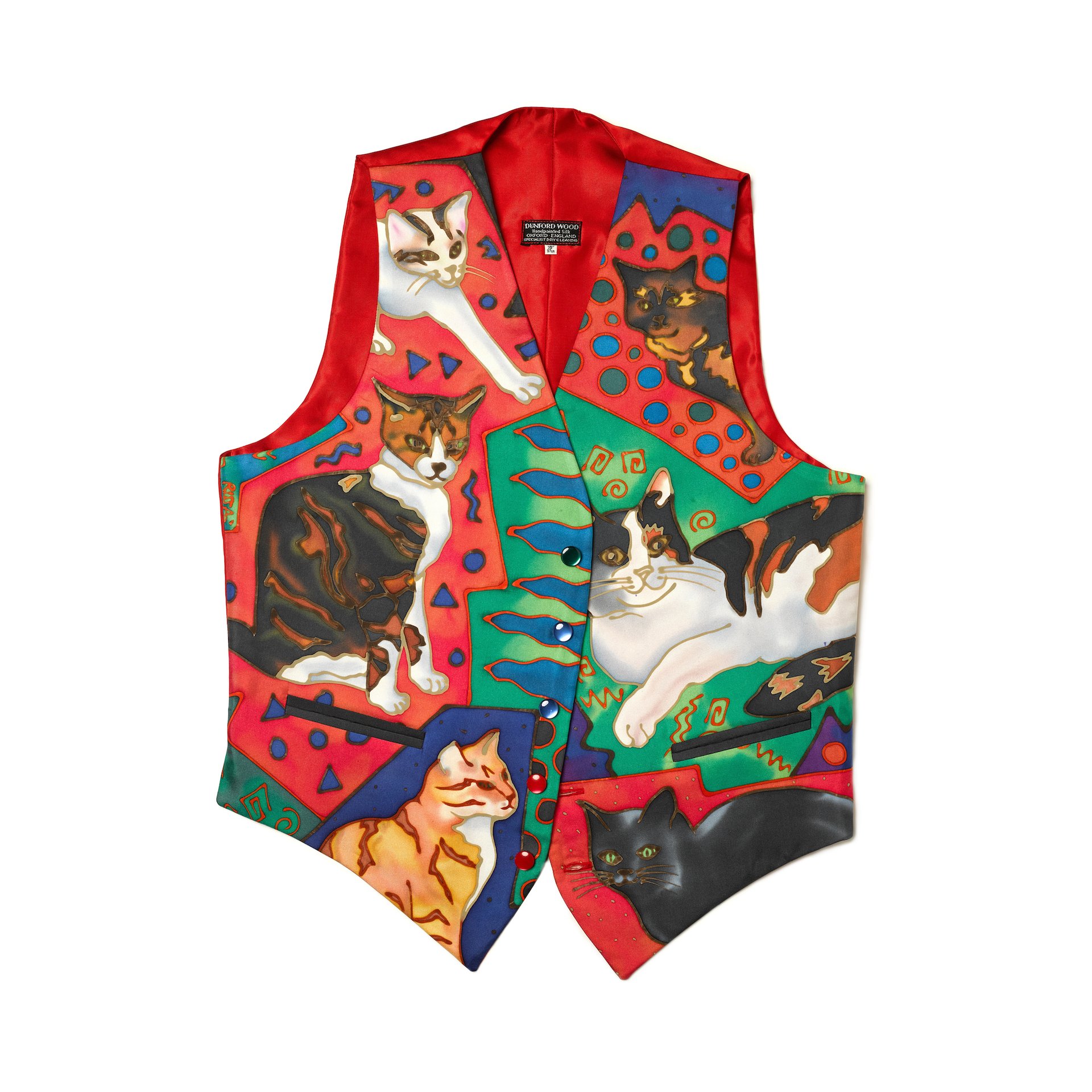
A feline-filled silk waistcoat by Dunford Wood that was reportedly Freddie Mercury's favourite waistcoat Courtesy Sotheby's
Macdonald summarises Mercury’s collecting motivations broadly into four categories: “Either; to augment a serious collection that aroused his interest; for use, for example a beautiful pair of silver candle sticks for the dining table; for fun, something that made him smile; or for his own professional use, something he’s created or worn, such as his lyrics or stage costumes. All of the things in the sale seem to fit into one of those boxes.”
Sotheby’s will tour highlights from the sale to New York, Los Angeles and Hong Kong this June, before displaying the entire collection at New Bond Street in London from 4 August to 5 September. The six auctions (three live in London and three online) will kick off with an evening auction on 6 September which, Macdonald says, will be “as Freddie would have liked it—an old school black tie evening sale. It’s like a greatest hits album, each department at Sotheby’s is selecting things that they particularly loved.”
The collection is not guaranteed and Macdonald predicts the total low estimate to be around £6m. But, he adds from the depths of Sotheby’s London warehouse, “there’s still piles of boxes to go through—I just opened a box of porcelain, but at the bottom was a beautiful Art Deco Cartier clock.”


